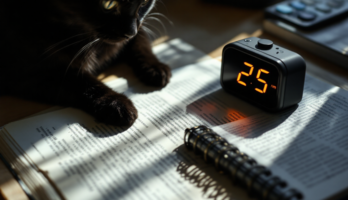Диссертация (1147688), страница 25
Текст из файла (страница 25)
2012. – 12(5) – P. 122-13082.Bullough, V.L. Children and adolescents as sexual beings: A historicaloverview. Child and Adolescent Psychiatric Clinics of North America. 2004. – 13 – P. 44745983.Clements G., Tourigny M., Cyr M. et McDuff P. Les comportements sexuelsdes enfants de 2 a 12 ans victims d’agression sexuelle ou non. In M. Tardif (Éd.),152L’agression sexuelle: Transformations et paradoxes, Cifas 2009.
Textes choisis. Montréal:Cifas-Institut Philippe-Pinel de Montréal.84.Davies S. L., Glaser D., Kossoff R. Children's sexual play and behavior in pre-school settings: Staff's perceptions, reports, and responses // Child Abuse & Neglect. –2000. – 24(10) – P.38-4485.De Graaf, H. & Rademaker, J. Sexual behavior of prepubertal children. //Journal of Psychology & Human Sexuality.
Haworth Press Inc. 2006. – 18(1) – P. 1-2186.De Graaf, H., Rademakers, J. The psychological measurement of childhoodsexual development in Western societies: methodological challenges. // The Journal of SexResearch. Taylor and Francis Publishing. 2011. – 48(2) – P. 118-12987.DeLamater J., Friedrich W. Human Sexual Development // The Journal of SexResearch. Taylor and Francis Publishing. 2002. – 39(1) – P.10-1488.DiIorio, C., Pluhar, E., Belcher, L. Parent-Child Communication AboutSexuality: A Review of the Literature from 1980-2002.
Journal of HIV/AIDS Prevention& Education for Adolescents & Children. 2003. – 5(3-4) – P. 7-3289.Dolto, F. L’Image inconsciente du corps. – Paris: Le Seuil, 1984. – 376 p.90.Egan, R. D., Hawkes G. L. Imperiled and Perilous: Exploring the History ofChildhood Sexuality. Journal of Historical Sociology. 2008.
– 21(4) – P. 355-367.91.Elkovitch, N. Multiple Determinants of Sexualized Behavior in MiddleChildhood: A Developmental Psychopathology Perspective. 2010. – Theses, Dissertations,and Student Research: Department of Psychology Univesity of Nebraska – Lincoln. P. 15.92.El-Shaieb M., Wurtele, S.K. Parents' Plans to Discuss Sexuality with TheirYoung Children. American Journal of Sexuality Education. 2009. – 4(2) – P. 103-11593.Encyclopedia of Children and Childhood: In History and Society. Ed.: FassP.S.
– New York and London: Macmillan Reference USA, 2004. – 1055 p.94.Feeneya J.A. Adult attachment, coping style and health locus of control aspredictors of health behavior. Australian Journal of Psychology. 1995. – 47(3) – P. 17117715395.Flanagan, P. Ethical beginnings: Reflexive questioning in designing childsexuality research. Counselling and Psychotherapy Research: Linking research withPractice, published online 2013. – 9.96.Flyvbjerg B. Case Study, in Denzin N.K.
& Lincoln Y. S., eds. The SageHandbook of Qualitative Research, 4th Edition. – Thousand Oaks, CA: Sage, 2011. – P.301-316.97.Foucault, M. The History of Sexuality – Volume I: An Introduction.Translation of Histoire de la sexualité. 1 - La volonté de savoir. Pantheon Books RandomHouse, Inc. New York, 197898.Fraiberg S, Adelson E, Shapiro V. Ghosts in the nursery. A psychoanalyticapproach to the problems of impaired infant-mother relationships. Journal of the AmericanAcademy of Child & Adolescent Psychiatry, 1975 – 14(3), 387–42199.Friedrich W. N., Fisher J., Broughton D., Houston M., Shafran C.
R.Normative sexual behavior in children: A contemporary sample // Pediatrics. 1998. – 101(4)– P.37-45100. Friedrich W. N., Grambsch P., Broughton D., Kuiper J., Beilke R. L.Normative sexual-behavior in children // Pediatrics. 1991. – 88(3) – P.221-230101. Friedrich W. N., Trane S. T. Sexual behavior in children across multiplesettings - Commentary // Child Abuse & Neglect. 2002. - 26(3) – P.108-112102. Friedrich W.N. et al. Normative Sexual Behavior in Children: AContemporary Sample.
// Pediatrics, USA, American Academy of Pediatrics. 1998. –101(9) – P. 8-12103. Friedrich W.N. et al. Child Sexual Behavior Inventory: normative, psychiatric,and sexual abuse comparisons. // Child Maltreat. Sage. 2001. – 6(1) – P.37-49104. Gagnon, J.H. (1985). Attitudes and responses of parents to preadolescentmasturbation. Archives of Sexual Behavior, 14 – P. 451-466.154105.
Goldman J.D.G. External providers’ sexuality education teaching andpedagogies for primary school students in Grade 1 to Grade 7. Sex Education. 2011. – 11(2)– 155-174106. Golombok S., Tasker F. Do parents influence the sexual orientation of theirchildren? Findings from a longitudinal study of lesbian families // DevelopmentalPsychology.
1996. ‒ 32(1) – P. 645-678107. Gordon B.N., Schroeder C.S., Abrams J.M. Childrens knowledge of sexuality– a comparison of sexually abused and nonabused children // American Journal ofOrthopsychiatry. 1990. ‒ 60(2).108. Gordon B.N., Schroeder C.S., Abrams J.M. Age and social-class differencesin children's knowledge of sexuality. Journal of Clinical Child Psychology. 1990.
– 19 – P.33-43109. Greenwald E., Leitenberg H. Long-term effects of sexual experiences withsiblings and nonsiblings during childhood // Archives of Sexual Behavior. 1989. – 18(5) –P. 389-399.110. Handbook of Attachment: Theory, Research, and Clinical Applications. JudeCassidy& Phillip R. Shaver (Eds.). New York: Guilford. 1999. 925 p.111. Handbook of Children and the Media. Singer D.G. and Singer J.L., eds.
LosAngeles, CA: Sage Publications, 2012. 803 p.112. Haugaard J.J. Sexual behaviors between children: Professionals' opinions andundergraduates' recollections // Families in Society-the Journal of Contemporary HumanServices. 1996. – 77(2) – P. 381-405113. Hazan C., Shaver P.R. Romantic love conceptualized as an attachmentprocess. J Pers Soc Psychol. 1987. – 52(3) – P. 511-244.114. Health for the world's adolescents: A second chance in the second decade.World Health Organization, 2014155115.
Heiman, M.L., Leiblum, S., Esquilin Cohen, S., & Melendez Pallito, L. Acomparative survey of beliefs about «normal» childhoodsexual behaviors. Child Abuse andNeglect, 1998. – 22 – P. 289-304116. Hornor G. Sexual behavior in children: normal or not? // The Journal ofPediatric Health Care. 2004 – 18(2) – P. 57-64.117. Huntsinger ET, Luecken LJ. Attachment relationships and health behavior: themediational role of self-esteem. Psychology & Health. 2004. – 19(4) – P. 515-526118. Hust S.J.T., Wong W.J, Chen Y.C. FCP and Mediation Styles: FactorsAssociated With Parents’ Intentions to Let Their Children Watch Violent, Sexual andFamily-Oriented Television Content. Journal of Broadcasting & Electronic Media. 2011.
–55(3) – P. 380-399119. Jackson S., Scott S. Theorising Sexuality (Theorizing Society) OpenUniversity Press; 2010 - 224 p120. Jones T.M. Saving rhetorical children: sexuality education discourses fromconservative to post-modern. // Sex Education. 2011 – 11(4) – P. 369-387121. Kaeser F., DiSalvo C., Moglia R. Sexual Behaviors of Young Children ThatOccur in Schools // Journal of Sex Education and Therapy. 2000. – 25(2) – P. 277-285122. Kehily, M.J. and Montgomery, H. Innocence and experience: a historicalapproach to childhood and sexuality, in M.J. Kehily (ed.) An Introduction to ChildhoodStudies, Maidenhead.
2004.123. Kellogg N. D. Sexual Behaviors in Children: Evaluation and Management //American Family Physician. 2010. ‒ 82(10) – P. 538-568124. Kesterton D., Coleman L. Speakeasy: a UK-wide initiative raising parents’confidence and ability to talk about sex and relationships with their children. // SexEducation.
2010. – 10(4) – 437-448125. Kirby D. (2002). The Impact of Interventions Designed to Promote ParentChild Communication about Sexuality. The impact of interventions designed to promoteparent-child communication about sexuality. Innovative approaches to increase parent-156child communication about sexuality: Their impact and examples from the field. New York:SIECUS.126. Kirby, D. Increasing communication between parents and their children aboutsex. British Medical Journal. 2008.
– 337 – P.206127. Krcmar M., Vieira Jr TE. Imitating Life, Imitating Television: The Effects ofFamily and Television Models on Children’s Moral Reasoning. Communication ResearchJune 2005. – 32(3) – P. 267-294128. Lagerberg D. Parents' observations of sexual behaviour in pre-school children.Acta Paediatr. 2001 – 90(4) – P. 367-9.129. Lamb S. Toward a Sexual Ethics Curriculum: Bringing Philosophy andSociety to Bear on Individual Development // Harvard Educational Review. 2010. ‒ 80(1)– P. 37-46130.
Lamb S., Coakley M. Normal childhood sexual play and games –differentiating play from abuse // Child Abuse & Neglect. 1993. ‒ 17(4) – P. 67-84131. Langfeldt T. Processes in Sexual Development. In: L.L. Constantine, F.M.Martinson (eds.): Children and Sex. New Findings, New Perspectives. Boston: Little,Brown & Co., 1981. – P. 37-44.132.
















